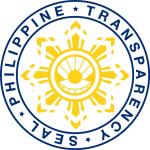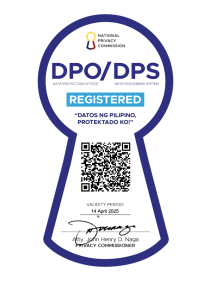FREQUENTLY ASKED QUESTIONS ON THE GPH – RPM-P/RPA/ABB PEACE PROCESS
Who is the RPM-P/RPA/ABB group?
On February 2, 1996, the RPMP was formed with the members of the breakaway Negros Regional Party Committee of the NPA as its initial members. Two months after it has been founded, the group announced the birth of its military arm called RPA. Then a year after, the Metro Manila-based urban guerilla unit ABB led by Nilo Dela Cruz joined them as well. Other leaders of the RPM-P/RPA/ABB alliance include Arturo Tabara with his wife Veronica Tabara and Stephen Paduano.
After 11 years, factions loomed within the ranks of RPM-P/RPA/ABB and due to leadership conflicts two groups were formed. These are the Tabara-Paduano Group led by Veronica Tabara and Stephen Paduano and the Nilo Dela Cruz Group. The group led by Dela Cruz got the support of members in Luzon and Iloilo while Paduano has the whole membership in Negros Occidental. Members in other areas of the country have mixed affiliations.
How did the Philippine Government and the RPM-P/RPA/ABB arrive to the signing of 2000 Peace Agreement?
The 2000 Peace Agreement was signed by the GPH and RPM-P/RPA/ABB on the basis of mutual interest to pursue the peaceful settlement of the armed conflict under the principle of peace with honor, dignity, and justice for all and to hasten the progress and development of the country.
In early 2002, a Clarificatory Document was signed in response to the issues raised on the substance and procedural aspects of the 2000 agreement. The JEMC was established to monitor the commitments set forth by the GPH and the RPM-P/RPA/ABB Peace Agreement and the general principles embodied under the Clarificatory Document.
How did the Philippine Government deal with the split of the RPM-P/RPA/ABB?
The GPH signed separate MOA with TPG and NDCG expressing their interest in completing the implementation of the 2000 Peace Agreement. However, it was only the TPG that continued the process of finalizing a draft Closure Agreement with the GPH.
What are the components of the draft Closure Agreement?
The draft Closure Agreement have five (5) components:
- Disposition of Forces and Arms with provision of Interim Security Arrangement;
- Socio-Economic Reintegration;
- Provision on the Restoration of Civil and Political Rights;
- Community Peace Dividends for communities influenced by TPG; and
- TPG Institutional Transformation.
It will cover the following:
- 727 profiled TPG members
- 556 inventoried firearms and 404 explosives
- Five (5) settlement sites and four (4) congregated areas
- 267 TPG members to form Community Security Force
- 100 barangays under Community Peace Dividends
The draft agreement will be implemented in communities located in the following provinces: Negros Provinces, Iloilo, Aklan, Antique, Bukidnon, Davao, and Ilocos Sur.
What is the status of RPM-P/RPA/ABB Closure Agreement?
The draft Closure Agreement awaits the signing of President Aquino. Prior to the signing, inter-agency preparatory work at the national and regional levels have proceeded to ensure that the implementing agencies, local government units, the TPG, and the various stakeholders on the ground will be ready to implement once the agreement is signed. Among these efforts are the following:The funds needed for the implementation of the Agreement’s
- The funds needed for the implementation of the Agreement’s various components have been provided for under the GAA for 2012 to 2016;
- The policies needed for the implementation of the Agreement’s various components is prepared or completed;
- The mechanisms needed for the implementation of the Agreement’s various components are constituted and are prepared to implement. Provincial and municipal technical working groups and interagency technical working groups have convened regularly in the last two years; and
- Some components of the Closure Agreement have been
jumpstarted.
What are the components of the draft Closure Agreement that have been implemented?
Prior to the signing of the Closure Agreement, several components of the Closure Agreement have jumpstarted.
Disposition of Arms and Forces and Interim Security Arrangement
- Profiling and biometrics of 727 TPG members was completed in 2012
- The DAF and ISA Implementing Plan has been finalized Socio-Economic Integration
- 128 TPG members have been employed as Forest Guards with the DENR since 2013
- 55 TPG members have been provided livelihood through the DENR’s National Greening Program projects with the Kapatiran chapters in Kabankalan and Aklan
- Settlement and congregated sites for TPG members are identified, with preparatory work undertaken for tenurial instrument
- Implementing Guidelines for the Sustainable Livelihood Program of 727 TPG members have been completed
- Health insurance for 422 out of the 727 profiled TPG members, 125 members are enrolled through the NHTS, and the others are sponsored by the local government units and/or their respective employees
- 30 dependents of TPG profiled members have study grants
Community Peace Dividends
- Profiles of 100 barangays already completed
- Health insurance for 5,056 members of CPD communities, 10,000 more are being processed
- 50 dependents have been granted study grants
Provision for Civil and Political Rights
- Review of 143 cases for 81 TPG members
- Creation of a team dedicated for TPG members with current warrants
- Amnesty Program under study
TPG Institutional Transformation
- TPG has been registered with the Securities and Exchange Commission (SEC) as “Kapatiran para sa Progresibong Panlipunan, Inc.” since 2013 and has established eight (8) chapters
- They have also been able to win a seat in the House of Representatives through the party-list, Abang Lingkod, since 2013






